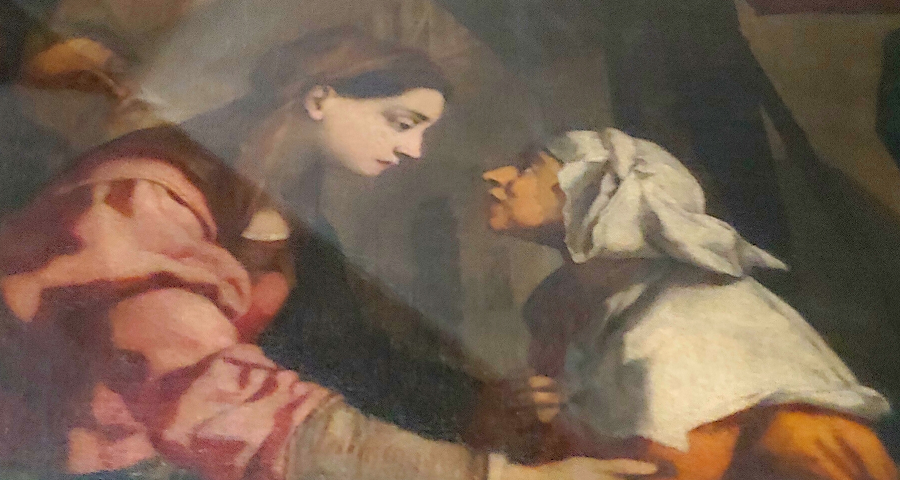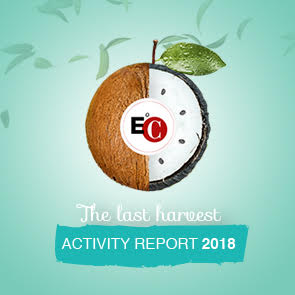The temple and the market/17 - The negative stigma placed on unwed women gradually led to the birth of new Monti, entities of credit and charity.
By Luigino Bruni
Published in Avvenire 28/02/2021
The dowry system as a means of excluding women from inheriting was established by the Italian citizen statutes as early as the thirteenth century and grew in force with the growth of the merchant class.
The dowry market is one of the most relevant economic and social phenomena between the Middle Ages and modern times, which makes us understand the high price paid by women, victims sacrificed on the altar of mercantile society. The dowry was the portion of the paternal inheritance that a daughter received at the time of marriage. Once she had obtained her dowry, a woman no longer had any rights to the assets of her family of origin. Hence, the dowry was the price to pay in order to exclude ones daughters from the paternal inheritance, establishing an all-male succession line. The dowry system as a means of excluding women from inheriting was established by Italian citizen statutes as early as the thirteenth century, and its weight grew together with the wealth of the new merchant families. Marrying away ones daughters became an increasingly serious problem for the patrician families, to the point that Dante missed the pre-mercantile Florence of his ancestor Cacciaguida, back then «when born, a daughter did not frighten her father» (Paradiso XV, 103). Here, Dante encapsulates in a single verse the essence of the dowry phenomenon in his city Florence, where the arrival of a daughter was merely a future cost for the parents. Discrimination against women has always been perpetrated directly in the face of women, the midwives, who had to give the sad news to another woman who had just given birth to a girl - experiences and pains that, thank God, we no longer are able to understand and have long forgotten. Bachelorhood for men was like a sign of nobility, while "civil" singlehood for women was socially stigmatized and generally discouraged.
An inflation of what had become the "cost of having daughters" for the new aristocracy began in Italy from the end of the fourteenth century: in Venice, the rate of 800 ducats at the end of the fourteenth century became 2000 ducats at the beginning of the sixteenth century, and in Rome, the dowry went up from 1400 to 4500 scudi during the sixteenth century (Mauro Carboni, The dowry of "poverty"/ Le doti della "povertà", p.30). An inflation mainly due to positional competition between rich families, who used their daughters as a status asset, in a dynamic now known as the "Prisoner's Dilemma", where the increase in the price of dowries did not benefit any of the "competitors" - except , in some cases, the wives who saw their economic weight increase within their future husband's family.
Then, with the arrival of the Renaissance, the Roman institution of fideicommis, in terms of "majorat" i.e. inheritance by the elder brother, and "primogeniture" i.e. inheritance by the firstborn, was resumed among the Italian patrician families. In other words, inheritance was left entirely to a single male heir, generally the firstborn, the "eldest" brother. This allowed for the conservation of patrimonies, which if fragmented among a number of heirs risked being dispersed. However, this "innovation" produced two major side effects. The cadet sons (that is, all but the firstborn) were gradually discouraged by their families from marrying, so much so that in the eighteenth century these children were in fact precluded from any possibility of marrying, and the two careers that remained to them were a military career or an ecclesiastical one. The second effect concerned the fate of wealthy daughters. The scarcity of males of the same rank meant that the demand for husbands far exceeded the supply. However, if a patrician father gave his daughter in marriage to a non-patrician, he would lose his dowry and compromise the good name of his house. Once again, the "common good" of the family was much more important than the good of the single individuals, especially that of women. Hence, what should be done?
First of all, families had to bestow their daughters with dowries, at almost any cost. Hence, in 1425 the Municipality of Florence created a fund for girls "without dowry", il Monte delle doti/the Monti of dowries. This was followed by many other similar institutions, including the Monti of marriage, "Monte dei maritaggi" in Naples (1578) and the "Monte del matrimonio" in Bologna (1583). They were both credit institutions and charitable institutions, because in addition to guaranteeing interest on deposits, they also managed bequests and donations, private and public, for the benefit of girls without or with insufficient dowries. Approximately 30000 girls were enrolled in the Monte delle doti In Florence between 1425 and 1569. The first Florentine to use the Monte, Federigo di Benedetto di Como, deposited 200 florins for his daughter Diamante, when Diamante got married in 1440, the dowry fund he withdrew had become 1000 florins. How can we not come to think of the effort of the Franciscans to get the Church to accept the 5% annual payment in their Monti di Pietà!? The families that we find registered in the Monte registers are above all those of the wealthy merchants of Florence - Acciauoli, Pazzi, Rucellai, Medici, Bardi, Strozzi - who clearly resorted to the Monte to make their investments more profitable. Half of the rich girls in Florence had an account ("libretto") at the Monte, something that is not surprising in the least. What is surprising is that many daughters of modest artisans also had an account. A parent with a modest fortune and of poor origins would do anything possible and even impossible to obtain a dowry account for his daughter, because he knew that it could be the only chance to give her a decent future (Anthony Molho and Paola Pescarmona, Investments in the Monte of dowries of Florence/Investimenti nel Monte delle doti di Firenze, Historical notebooks, 21).
The noblewoman Alessandra Macinghi negli Strozzi wrote about the upcoming wedding of her daughter Caterina: «I am giving her a dowry of one thousand florins, that is five hundred that she has to have in 1448 from the Monte [of dowries]; and the other five hundred, which I have to hand over, between money and wedding trousseau, when she leaves with her husband». Then she adds: «But he who takes a wife wants money, and I could not find anyone who wanted to wait for her dowry until 1448, and then get the rest in 1450. Hence, having given him these five hundred, between money and wedding trousseau, if she lives, the rest expected in 1450, will be handed to me» (Alessandra Macinghi negli Strozzi, Letters of a Florentine gentlewoman/Lettere di una gentildonna fiorentina, 1877, p.4). The early settlement of the dowries was in fact a risk, because in the event of the death of the holder, the sum returned by the Monte was greatly reduced.
The economic value of a bride's dowry was therefore an indicator of her social value as a woman. Formally, the dowry remained the property of the wife but administered by her husband, and returned in the woman's possession in the event of widowhood. A woman, who remained without a dowry, because her family had become impoverished or had fallen in disgrace, was considered "dangerous" and exposed to vice. Hence the birth of the many assistance institutions for women without dowry, often named after Mary Magdalene, for young girls and/or for the recovery of women who had fallen into sin (for example, prostitutes). "Conservatories" and "reclusories" who, while detaining women at risk in forced seclusion, collected donations to guarantee them a dowry at the moment of their engagement - which took place by the "touching of the hand" of the woman in front of other witnesses - or at the entrance of the convent (Luisa Ciammitti, How much does it cost to be normal. The dowry in the women's conservatory of Santa Maria del Baraccano/ Quanto costa essere normali. La dote nel conservatorio femminile di Santa Maria del Baraccano, 1630-1680, Historical notebook, 18).
There is, in fact, a close relationship between the dowry market and religious life. What "to do" with the daughters who could not be "placed" in the wedding market? Resigning oneself to a husband of lower social and economic rank was a humiliation and too high a "cost" for the patrician families to accept. So it came to pass that monasteries and convents offered the ultimate solution. For rich families, the confinement of a daughter became the main way to «eliminate women who remained excluded from the marriage market by placing them in a convent, making them institutionally sterile» (Susanna Mantioni, Forced Monastications and Forms of Resistance against Patriarchalism in Venice during Counter-Reformation/Monacazioni forzate e forme di resistenza al patriarcalismo nella Venezia della Controriforma, 2013). If an asset that was too precious (an aristocratic daughter) could not be adequately allocated on the market, it had to be destroyed by monastication. Because it was better to destroy than to sell off such a precious asset, since its sale to an inadequate family would have started a cumulative social decline with unpredictable costs. Elimination through enclosure was the best solution. Furthermore, the sacrifice of some patrician daughters placed in convents enabled a convenient marriage for some of their more fortunate sisters. In part because the monastic, or spiritual dowry, was much cheaper than the matrimonial one (up to twenty times less). This explains both the multiplication of female convents and monasteries after the fifteenth century, and why almost all the nuns and sisters in modern age came from noble or upper-bourgeois families, and why more than half of the daughters of patrician families became nuns or sisters.
There is more, however. The wealthiest families had private cells built for their daughters, real apartments within the monasteries, which were used exclusively by the nun in question throughout her life. These nuns often managed their dowry themselves, along with the revenues of their own capital. This highlights a complex relationship between common life, private property and the symbolic use of personal space inside the monasteries of the early modern age (Silvia Evangelisti, The use and transmission of cells in the monastery of S. Giulia in Brescia/ L’uso e la trasmissione delle celle nel monastero di S. Giulia di Brescia, Historical Notebooks, 30). These hints are enough to understand the real meaning of Teresa of Avila's reform of female religious life.
One last consideration. The use of a semantic register of gifts for similar operations is very significant. Giovanni Tiepolo, Patriarch of Venice, said the following about nuns: «Making one's freedom a gift not only to God, but also to the homeland, to the world, and to their closest relatives» (early 17th century). However, what gift was at stake, for those daughters who did not have the opportunity to choose the life they wanted to live? First of all, it was a gift made by their father, not their gift. It was a gift that their families and society asked of those women to save social order and their house. It was a gift similar to that of the potlach of the Pacific islands studied by Marcel Mauss (1925), where there was no gratuitous aspect to the "gift" whatsoever, instead it was a language of political and commercial power, which could even include the destruction of the object being gifted (dissipative potlach), in order to assert one's superiority.
Only the angels above know the pain of these donated-women, tokens paid to a society that was in the throes of being born. Oceans of female suffering, within monasteries and inside homes. These tears were the first water with which we mixed the foundation of the modern cities. The only small, partial, but not useless, consolation that remains is to think that some, perhaps many, of those nuns and sisters were greater than their destiny. Like their "spouse", they too found themselves, unwittingly, nailed to a cross, and once there some of them decided to experience that innocent pain, not chosen by them, as a gift, a different and in the end free gift. Sometimes they have even been resurrected and come back. If so many women can live their lives in convents and monasteries as a true gift and truly free today, those ancient resurrections can be found somewhere within those gifts and freedoms as well.








